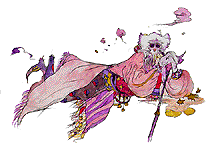| Fifth Generation Systems, 1989 -1995 Many say that in 1989, the video game industry needed a good, firm, kick in the pants.11 The NES had been the only system of choice since 1985, remaining unchanged while the arcade machines raced towards increasing sophistication. Faster and more powerful arcade structures were reducing the price of the older arcade technologies, bringing them within the home video game buyer's price range. The industry (which had been decimated eight years previous only to return more stalwart than ever) was buzzing with rumors of 16-bit monster systems on the horizon. Sega had managed to stay in business despite the poor performance of its Master System due to their massive arcade base. They had been working on converting their arcade architecture into a home console, and were close to completing it. NEC, a Japanese company with $22 billion annual sales in non-video game arenas, spent $3.7 billion in Research and Development on video games in 1988. Both companies should have spurned Nintendo into action to produce their own 16-bit system. Nintendo, however, stayed with their lordly "above-the-fray" stance. "We listen to our players," Bill White, a Nintendo executive, told the press in 1989, "They tell us they are extremely happy with the existing system and are totally involved with the games. We haven't maxed out our 8-bit system yet." This attitude would leave Nintendo in the dust of the coming 16-bit revolution. Over the next five years Sega and Nintendo would battle for supremacy, neither really pulling out ahead of the other and dominating the market exclusively. The end of year sales reports were indicative of the Pong match between the two Goliaths: 1991- Nintendo, 1992 - Sega, 1993 - Sega, 1994 - Nintendo, 1995 - Sega, etcetera. This heated battle between the two companies would greatly benefit the consumer, as both companies would try to best the other in their games. Jobs would also be created by the fiasco, and the industry boomed with many new concepts and ideas seeing light that might have been shunned traditionally. Alternative mediums gained popularity as Sega produced a fairly popular CD system called the Sega CD. Supposed system limitations were continuously toppled. The Genesis was able to display more colors through software techniques such as anti-aliasing and screen flipping. In addition to this, sophisticated scaling and rotation routines were created and refined until the Genesis could match those of the SNES. Nintendo designers shortened code and made software more concise until the SNES could seemingly operate at the same speed as the Genesis. Ultimately, neither system would beat the other. At the end of the 16-bit era, both systems had comparable sales, number of games, and, most importantly, respect. |
| Part: |
| 5 |
 |